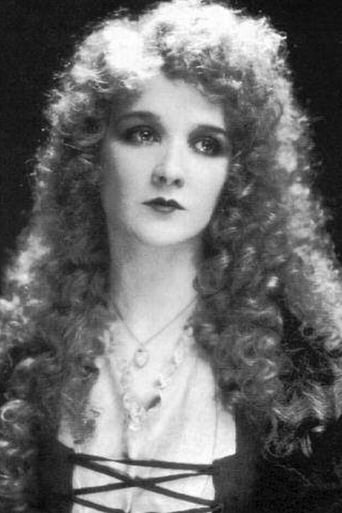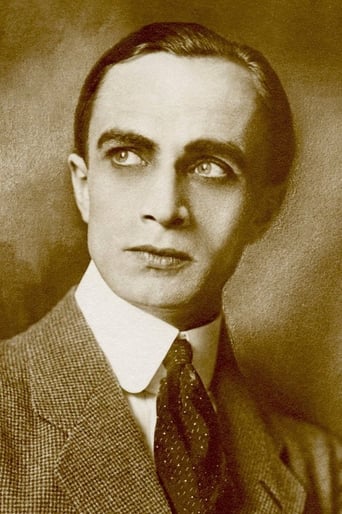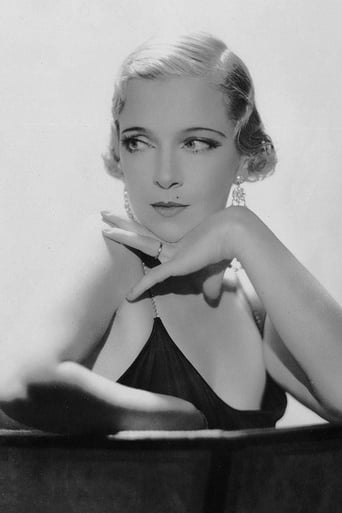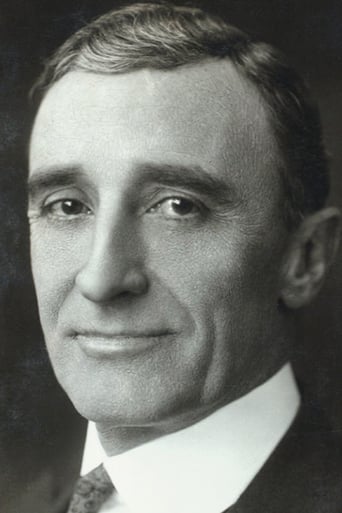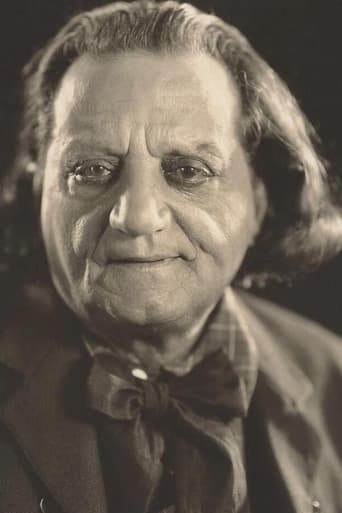Perry Kate
Very very predictable, including the post credit scene !!!
Smartorhypo
Highly Overrated But Still Good
Kailansorac
Clever, believable, and super fun to watch. It totally has replay value.
Senteur
As somebody who had not heard any of this before, it became a curious phenomenon to sit and watch a film and slowly have the realities begin to click into place.
Coventry
Practically ALL horror movies from the silent era are brilliant masterpieces, but obviously you have to be in a certain type of mood in order to truly appreciate them. You can't just pop a silent horror into the DVD-player after a busy and stressful day, as these are films that you literally have to absorb with all your senses. Whether it's a German expressionist classic ("Nosferatu, eine Symphonie des Grauens", "Das Cabinet des Dr. Caligari"…) or one of the earliest Universal classics ("The Phantom of the Opera", "The Hunchback of Notre Dame"…), silent horror movies are sophisticated and emotionally exhausting, but oh so worthwhile! "The Man Who Laughs" is a Universal production, albeit with the collaboration of German expressionist talent. The famous production company hired the visionary director Paul Leni ("Waxworks") and charismatic protagonist Conrad Veidt ("The Hands of Orlac") in order to peer with the previous success films, but unfortunately the invention of sound in films and the very first movies with audible dialogs were in 1928 the main reasons why "The Man who Laughs" sadly never received the fame and recognition it fully deserved. Almost 90 years later now, the film luckily does get considered as an immortal classic. "The Man who Laughs" is a brilliant movie, but not exactly from start to finish. I have to say, the first 15-20 minutes are downright mesmerizing and most definitely belong in my personal list of greatest movie-moments in history. I could probably write five full pages about the magical first quarter, so unbelievably fantastic it is! The opening sequences are simultaneously endearing, shocking, horrifying and tragic. James II, King of England in the year 1690, and his diabolical jester Barkilphedro capture nemesis Lord Clancharlie and condemn him to death in the iron maiden. Right before dying, Lord Clancharlie also finds out that his young son Gwynplaine got sold to the cruel Comprachico gypsies. They surgically carve a permanent grin in the faces of their victims to sell them as clowns or jesters. Later, when the Comprachicos are exiled from England, they abandon the poor and reluctantly smiling boy in the cold England. He rescues a baby girl from the arms of her dead mother and finds shelter under the wings of the wise philosopher Ursus. This description only covers the first fifteen minutes of the film, but – as stated clear already – they are stupendous! The visually striking first scene inside the flamboyant bedroom of King James, Gwynplaine's heartbreaking journey through the snow and underneath dangling corpses on the gallows and, most of all, the perplexing moment when the young boy saves the blind baby Dea that would later become his muse. The footage where the Gwynplaine's savior Ursus screams: "Stop laughing! Stop laughing, I said!" and the poor lad replies with "I'm not laughing" truly brought tears to my eyes. Most unfortunately, however, the remaining hour and a half aren't nearly as brilliant, captivating and emotional as the first fifteen. Gwynplaine and Dea grow up but remain with Urses and they make a living as traveling circus artists. Gwynplaine becomes famous across the nation as "the laughing man". He gets recognized as the lost son of Lord Clancharlie and becomes noticed by the eccentric Duchess Josiana. Far too much time is spent on the forced romance/game of seduction between Gwynplaine and Josiana, illustrated through a couple of scenes that were very erotic and ahead of their time, even though it's abundantly clear that his craving to be with his beloved Dea will overrule everything. The film too often gets a little bit tedious and repetitive, but plenty of things remain worth seeing, like the continuously stellar acting performances from the ensemble cast, too many to mention visual highlights captured by Paul Leni's gifted art-director's eye and a genuinely uncanny atmosphere every time that diabolical jester Barkilphedro in on screen. All footage with the sensual actress Olga Baclanova (later the anti-heroine in "Freaks") literally burst with eroticism, whereas actress Mary Philbin embodies the pure and wide-eyed innocence. Conrad Veidt
Irishchatter
The reason i got to this film was because the Joker from Batman was inspired by Conrad Veidt's character in this film! By god, he did look so much like the Joker, he has the smile, make up, anything you can think so creepily. However Gwynplaine wasn't evil, he was more of a romantic and a sweetheart. Definitely, himself and Dea were a marvellous couple! At the same time, i had to give this a 6 because:1. When the characters were speaking, the textboard just said a sentence, it didn't pick up much of what they were saying to one another or even to themselves! I know this is 1920's we're talking about but, they should've got every line on what the characters had said! 2. It was too long for a silent film in my opinion. I think if they kept it to one hour and 28 minutes, it would've been sufficient!3.You could hear the background noises but you cant hear the voices of the characters?! It really doesn't make sense to me why they left the voices out when there was actually noise in this!I would call this an OK movie but it could've done a lot better tbh.................
n_r_koch
An extravagant production, with multiple sets and locations and lavish period costumes. This is one of the highest examples (like THE SCARLET LETTER, PANDORA'S BOX, and LA PASSION DE JEANNE D'ARC) of what got killed off when smarts replaced beauty at the cinema after 1927. Like SUNRISE it is basically a Weimar Misfit film shot in Hollywood. Like those '20s German films it dwells very long on the scenes of humiliation. The story is old-fashioned, yet the movie is cinematically advanced, with moving camera and a huge range of shot types and compositions, and does not suffer by comparison with today's camera work. There is a lot of simply pictorial work, which for some reason is underused in most movies. Veidt is playing not only without words but essentially in a mask-- without a mouth. Somehow he carries the movie (it wouldn't work without him). Mary Philbin (she's like a Griffith character) is the blind beauty who loves him for what he is. The charismatic, intriguing Baclanova is the fun-loving duchess who comes between them.One DVD edition aimed at the horror crowd has packaging that shows Veidt tinted a hideous green-- which does not appear in the movie itself. This packaging is basically what the movie itself is attacking.
mlevans
After finally getting to see The Man Who Laughs all the way through, I am struck by how good Conrad Veidt was and also what a wonderful Dracula he would have made. For those who don't know, instead of Tod Browning directing Bela Lugosi in Dracula, we very nearly had Paul Leni directing Veidt as Dracula. Leni's untimely death in 1929 ended that delightful possibility. The scenes in which Veidt hides his carved mouth bring home what an ideal vampire profile he had. And of course, Veidt always oozed of menace when the camera was on.That is one reason his work here impresses me so much. For once he is cast as a sympathetic figure and carries it off quite well. Horrific, pathetic and sympathetic, his Gwynplaine is a complicated character and one of the more memorable ones of the silent era. Of course Mary Philbin is an angel and gives probably her best performance as Dea. Brandon Hurst is wonderfully smarmy as the lecherous jester and steamy Olga Baclanova is great as the spoiled duchess who likes to let her hair down and play with the peasant class. Cesare Gravina is also touching as the kindly Ursus. In fact the whole cast is strong from Josephine Crowell as Queen Anne to Zimbo the Dog as Homo!Of course Leni, in one of his final films, shows his usual deft touch. What a shame it was that two of the silent era's best directors, Leni and Murnau, never got a chance to explore sound film.The Man Who Laughs isn't that easy to find, but is well worth looking for.

